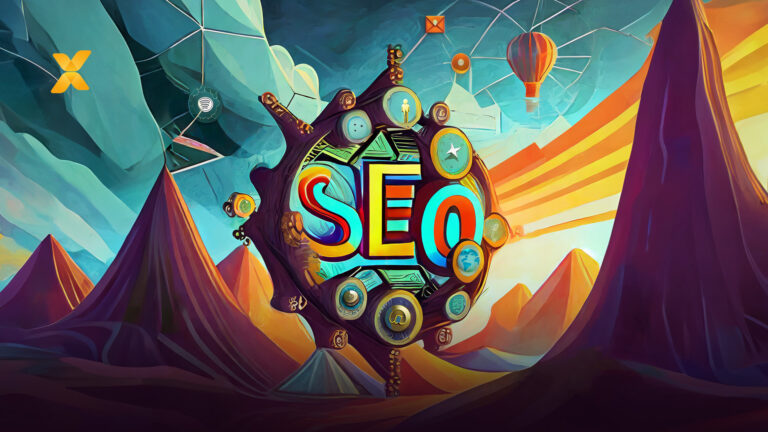There is perhaps no better investment for businesses looking to boost ROI than optimizing your customer experience. Focusing on the customer journey across digital channels touches on the basics of the retail experience leading to improved engagement and, ultimately, conversion.
When COVID hit, most retail businesses recognized that they had to invest in new digital interfaces. In some cases, they were looking to refine or enhance the customer journey. During this time, you probably wanted to create more demand for your product, stand out from the crowd, convert new customers, and retain those you had.
However, in this rapid transition to the digital space, where was the true focus of your business? While much has been said about the customer experience and eCommerce from a design and user experience perspective, the following guide will hone in on some key optimization efforts that impact your bottom line the most.
We will take a look at the top ten areas of customer experience optimization that have the highest ROI, breaking them down into three critical components of the user journey.
Awareness
Every purchase begins in the awareness stage. During this period, your goal is to ensure that customers know who you are, what your brand is about, and what products or services you offer. During the awareness stage, there are three key experiences to focus on optimizing.
1. Top Conversion Paths
The first place to begin is by looking at the unique paths that have led to conversions. From here, you can analyze the number of conversions you have gained from each path and the value those conversions brought to your business.
In many cases, you will begin to see a pattern emerge.
For example, one of your top conversion paths might include the following channels:
Consumer Clicked on a Facebook Ad > Consumer Was Brought to Landing Page B > Consumer Clicked Call To Action Button C > Consumer Converted
If you notice that most of your highest value conversions took this same path, you can begin to optimize your strategy. For example, if you use paid media, you might want to increase your spend on a particular ad or channel based on your top conversion paths.
When analyzing your top conversion paths, also take time to consider the length of the path. Path length is a simple way to gauge the performance of your efforts. How many channels does your audience pass through before they convert? By analyzing this data, you can look for areas of improvement, shortening the length of the path to conversion.
2. Consistency by Traffic Source
During the awareness stage, consistency is key. No matter what traffic source you use to acquire a new customer or win back an old one, the experience has to match the rest of the user’s journey.
Think about it like this: Have you ever been sent an email and thought to yourself, “What company is this?”
The odds are good that this business was running their email marketing campaigns independent of their other marketing efforts. When you take a siloed approach to sourcing leads, you wind up creating an inconsistent experience with your brand.
Regardless of where a customer first meets you, whether in their inbox or via Instagram, they should have the same consistent experience with your brand.
An optimized omnichannel customer experience doesn’t start the moment a customer lands on your website or walks into your store — it begins from the very first moment they interact with your company.
3. Time Lag to Conversion
Another critical metric to keep your eye on during the awareness-building stage is the time between acquisition and conversion. Time lag provides you with meaningful insights into the length of your online sales cycle.
This metric can help point out any latency or gaps in your customer experience.
For example, what would it take to get a consumer to convert in five days rather than 12? What is it that happened on the 12th day that led your customer to make a purchase? Could you use this same tactic earlier on to shorten the time between acquisition and conversion?
Consideration
Moving out of awareness into the consideration stage, businesses need to turn their attention to three key areas of optimization. Each experience plays a critical role in improving conversion.
4. Overall Speed
When a customer makes it into the consideration portion of their journey, one of the first factors that will impact their experience is the overall speed of your desktop or mobile experience.
According to research by Google, over 50% of mobile visitors will abandon a website if it takes longer than three seconds to load.
Additionally, another Google study showed that when page load time goes from one second to 10 seconds, the probability of a mobile site visitor bouncing increases 123%.
This simple concept is important not only because consumers have little patience for load times, but also because Google ranks pages higher in search results for relative keywords when your page speed score increases.
In addition to checking your site speeds regularly, be sure to optimize your images specifically for eCommerce. Google Images is the second-largest search engine by volume, which makes it imperative that your eCommerce strategy and design has image optimization at its core.
5. Landing / Exit Flows
Hand-in-hand with point number two from the awareness stage is the importance of seamless channel transitions.
You should be working toward a unified, personalized customer experience, starting with the very first place your traffic lands.
If a customer is funneled to a landing page via an ad, it is critical to ensure that they see the right products, images, and content based on where they are in their customer decision journey.
You should never build catch-all landing pages where you funnel people from numerous sources.
For example, if your customer sees an ad for a specific style and color of a dress, they should not click on that ad and land on a women’s clothing page. They should land on a page that features the dress the ad showcased, with an easy and quick call to action allowing them to convert within seconds.
This doesn’t mean that a landing page can’t feature multiple buttons and surface numerous content styles. It simply means that everything on a single landing page should be focused on the same conversion goal.
The red dress landing page might have a quick “add to cart” call to action; it might have a “see gallery” option and a “view material details” button. However, every single component of the landing page should be geared toward converting the customer into purchasing the specific dress they saw in an ad moments earlier.
Conversion rates decrease if a buyer’s attention isn’t purposefully focused on a single action.
6. Site Search Usage
During the consideration stage, customers should find exactly what they are looking for without hassle.
If a customer knows the specific product they want to find, they should be able to search for that product easily.
If a customer wants to browse through the store and compare similar product types, navigation menus and filters should make this process intuitive and simple.
Menus, categories, and search features should all be easy to use and frictionless.
This digital experience optimization should be completely data-driven and include an analysis of all of the following:
- Search scope selection
- How your autocomplete is designed
- Results layout and features
- Options for filtering and sorting through search results
Constantly conduct extensive testing to understand how easy it is for your users to navigate your search features and adapt accordingly.
|
Would you like to learn more about this topic? |
Purchase
The final goal of a well-honed customer experience should be to convert your customers to the purchasing stage. During this stage, there are four key areas to focus on optimization.
7. Product List Performance
When brands shift to an eCommerce mentality, they often neglect the continual grooming of their product list. Digital commerce is frequently touted for its ability to offer an endless list of products.
While there are businesses that operate successfully by simply offering every product possible, there are three key considerations for your brand to take into account when surfacing product lists to consumers:
- The 80/20 rule, or the Pareto principle, probably holds true for your products. This principle means that roughly 80% of your sales probably come from 20% of your products. Honing in on the right products is more important than simply surfacing every product possible.
- If your product list is not well organized and your product data is not well managed, you may actually degrade the experience for your customer. The more products you are surfacing, the harder it becomes to manage the information and to create a meaningful search experience.
- The argument that adding more products to your eCommerce catalog has no cost is not true. In business, everything has a cost, and by pruning your product list, you can actually improve your conversation rates, leading to increased profits.
8. Session Duration
During the final stages of the consumer journey, it becomes critical to measure and optimize session durations. How long are consumers sticking with you, and how well are you engaging with them?
Optimizing session duration requires you to look long and hard at what you are surfacing to your consumers. Are you providing them with enough of what they are seeking?
For example, if you are a community-oriented brand, do you have enough content to contextualize the shopping experience? Is the experience consistent and unique?
If you are a highly transactional brand, do you have enough depth of product, quality search features, real-time personalization, and optimized product descriptions?
The goal is to create a truly user-centric shopping experience where your customers can easily find the right product intuitively.
Think about Amazon’s home page. When you are logged into Amazon, a personalized block in the first section under “Related to Items You’ve Viewed” surfaces highly relevant products, making it simple to purchase products you are already interested in buying.
9. Shopping Behavior
Ecommerce and digital customer experience allow you to track everything. This means that you can learn from shopping behaviors and adapt your brand’s specific strategy accordingly.
Consider testing and measuring the following tactics when optimizing this portion of your customer journey:
- Exclusive sales to existing customers: Though the exact figures are debated, keeping a customer is much less expensive than acquiring a new one. Depending on what industry you’re in, acquiring a new customer is anywhere from five to twenty-five times more costly than retaining an existing one. An optimized retail customer experience entices customers to return to your store, and exclusivity is a great way to keep existing customers coming back. Hosting exclusive sales for your existing customer base can draw them back to your store and provide them with added value for brand loyalty. It also creates a bit of FOMO for those who have not yet tried your brand.
- Discounts to first-time purchasers: A classic eCommerce strategy, offering discounts to first-time purchasers can help overcome any hesitancy to trial. Make sure to measure how effective this strategy is by paying attention to repeat purchase rates.
- Delivery options: People are obsessed with free delivery. Almost 79% of consumers surveyed by Walker Sands said free shipping was the #1 incentive when asked what would make them shop online more often. Amazon has changed the game when it comes to shipping, making it more important than ever before to optimize this portion of your customer journey.
10. Checkout
The checkout process is one of the most important and yet most difficult areas of the eCommerce experience to optimize. Shopping online makes it ridiculously simple for consumers to add items to their carts, leading to many abandoned shopping carts.
However, why consumers abandon their carts is much harder to ascertain. In some cases, they may have simply added a product into the cart on a whim. In other cases, they might be using their cart to act as a sort of “saved items” list.
Preventing abandoned shopping carts and using a shopping cart to effectively cross-sell and up-sell can only be accomplished through a series of testing.
Test your shopping cart functionality regularly, such as the number of steps in your shopping cart, payment methods, possible exits, and potential distractions.
Keep in mind that conversion is a lagging indicator. The KPI for your shopping cart is simple — revenue. After all, increased revenue is the entire goal of your website.
Invest in Meaningful Customer Experience Optimization Today
Customer experience optimization is critical to creating the highest ROI possible for your eCommerce strategy. At Vaimo, we specialize in helping businesses improve their customer journey optimization. We can work with you to measure your existing effectiveness, test new strategies, and create an approach that boosts revenue.
If you are interested in applying any of the above quick wins to boost your eCommerce ROI, reach out to our team today. We look forward to helping you meet your customer along the retail journey.








